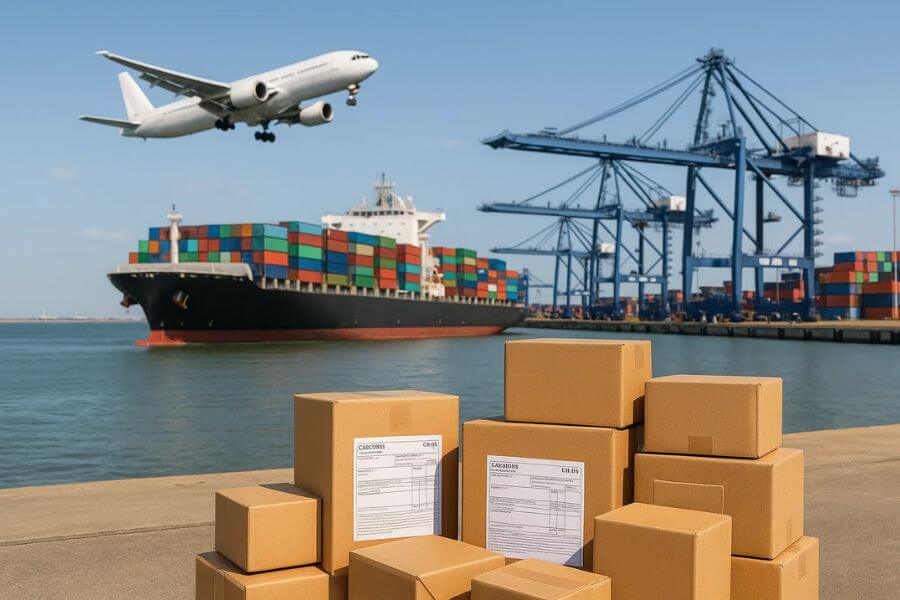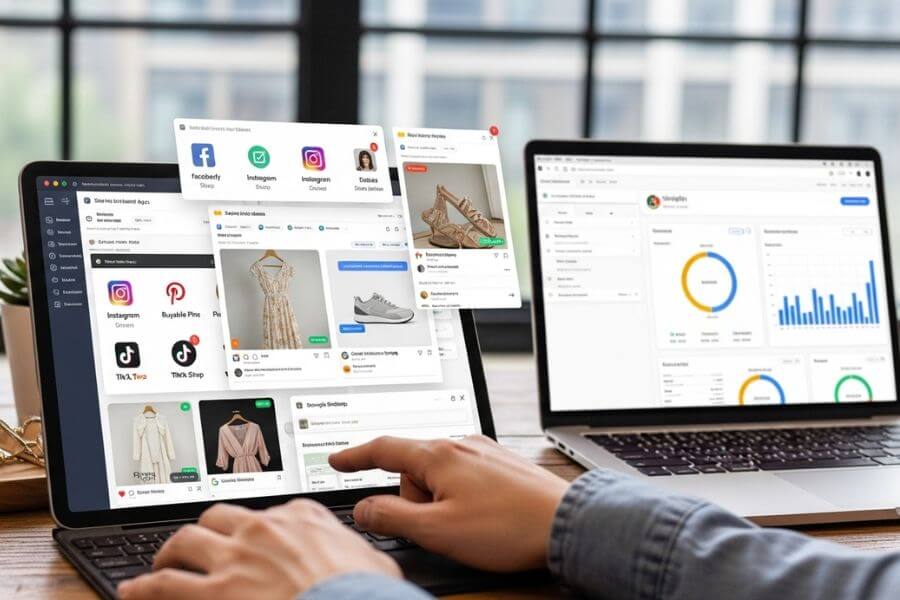When importing products across borders, businesses and consumers alike are always looking for ways to cut costs. One effective method is staying under the de minimis threshold, which determines the maximum value of goods you can import duty-free or with minimal paperwork. In the U.S., for example, the de minimis value is $800, meaning shipments valued at $800 or less can generally enter without paying customs duties or taxes. Other countries have their own limits, often lower, so knowing these thresholds is key to avoiding unnecessary costs.
If you’re running an ecommerce business or simply shopping from overseas, understanding how to manage your imports within these limits can save you significant money and time. In this article, we’ll walk through 10 proven strategies to stay under de minimis and avoid import taxes, while still keeping your supply chain efficient.
1. Understand the de minimis threshold in your market
The first step to avoiding import taxes is knowing exactly where the threshold lies in your target country. Every country sets its own rules, and these rules not only differ but also change over time as governments update their trade policies.
Here are some examples of current de minimis thresholds (as of 2025):
- United States: $800 per shipment.
- Canada: CAD $40 for duties and CAD $150 for taxes.
- European Union: €150 for customs duties (though VAT applies from the first €1 in most EU countries).
- Australia: AUD $1,000.
- China: Around RMB ¥800 for most items, though it varies by category.
- Japan: ¥10,000 (approx. $90).
- Singapore: SGD $400.
These numbers highlight how uneven thresholds are across different markets. For instance, a U.S. ecommerce customer enjoys a very high $800 duty-free allowance, while a buyer in Japan has a much lower threshold.
Why it matters: If you don’t know the specific de minimis level, you risk miscalculating the value of your shipments and unintentionally triggering duties. A shipment just a few dollars over the threshold could end up costing significantly more once taxes and fees are applied.
Action step: Create a quick reference sheet for your top selling markets. This could be as simple as a table that lists the de minimis threshold, the applicable taxes (like VAT), and any exceptions. Keep this updated regularly so your team can make smarter shipping and pricing decisions.
2. Split larger orders into multiple shipments
A very common strategy importers use is splitting bulk orders into smaller shipments. This allows you to take advantage of the de minimis threshold multiple times rather than exceeding it with a single large shipment.
For example:
- A shipment worth $2,400 would normally incur import duties in the U.S.
- By splitting it into three shipments of $800 each, all three can enter duty-free.
This method works particularly well for businesses selling products that don’t need to arrive all at once, such as clothing, electronics accessories, or small consumer goods.
Things to consider:
- Shipping costs: While splitting shipments may increase freight costs, these can often be outweighed by the savings on duties. It’s important to calculate both scenarios.
- Customs scrutiny: Some customs authorities may flag “split shipments” arriving at the same time for the same recipient. To minimize risk, stagger shipments a few days apart or use different carriers.
- Customer expectations: If you’re shipping directly to customers, make sure multiple deliveries won’t frustrate them. Communicate clearly about timelines.
Tip: Work with a logistics partner who understands how to structure shipments legally to avoid them being reclassified as one large order.
3. Optimize your shipping frequency
Instead of placing one large bulk order every month, consider breaking it down into smaller, more frequent shipments. This approach ensures that each shipment remains under the de minimis threshold while also improving inventory management.
For example, if you’re an ecommerce seller importing from China:
- Monthly order: 1,000 units at $20 each = $20,000 shipment (subject to duties).
- Weekly order: 250 units per week at $20 each = $5,000 per shipment (can be split into sub-shipments under de minimis).
Advantages of this approach:
- Smoother inventory flow: You won’t have all your stock tied up in customs at once.
- Lower storage costs: With smaller orders, you can reduce the need for large warehouses.
- Better cash flow: Instead of paying for large shipments upfront, you spread costs over time.
Drawback: You’ll need to balance higher shipping costs with duty savings. In many cases, especially with lightweight, high-value products, this strategy is still cost-effective.
4. Work with third-party logistics (3PL) providers
One of the smartest moves businesses can make is partnering with an experienced third-party logistics (3PL) provider. A good 3PL understands how to navigate customs rules, repack shipments, and manage international shipping efficiently.
How a 3PL helps with de minimis:
- Shipment consolidation: They can combine multiple supplier shipments into one export package, then split them appropriately at the destination to stay under thresholds.
- Repacking and labeling: 3PLs can repackage orders into duty-free-friendly sizes.
- Customs compliance: Many 3PLs have in-house customs experts to ensure accurate valuation and paperwork.
- Bonded warehouses: Some operate bonded facilities where you can store goods duty-free until released into the market.
Example: An ecommerce business shipping fashion accessories from Asia to the U.S. could use a 3PL in Los Angeles that breaks down large imports into smaller orders, ensuring each package qualifies under the $800 de minimis.
This reduces not only tax exposure but also speeds up delivery times for end customers.
5. Choose carriers with experience in cross-border ecommerce
Not all carriers handle de minimis shipments effectively. Some specialize in bulk freight, while others are optimized for ecommerce small parcels. Choosing the right carrier can determine whether your shipment clears customs smoothly or gets delayed and taxed.
Look for carriers that offer:
- DDU (Delivered Duty Unpaid) services, where duties aren’t prepaid and shipments often qualify under de minimis.
- Direct customs integration, so shipments are cleared electronically and more quickly.
- Shipment tracking, giving you visibility into whether packages passed through duty-free.
Examples of carriers for ecommerce:
- DHL Express
- UPS Worldwide Express
- FedEx Cross Border
- Local postal partnerships (like USPS, Canada Post, etc.)
Tip: Talk to your carrier about their cross-border ecommerce solutions. Many have special programs specifically designed to optimize shipments under de minimis thresholds.
6. Use proper HS codes and accurate valuation
One of the most overlooked factors in staying under de minimis is documentation accuracy. Customs clearance relies on HS (Harmonized System) codes and declared values. If you misclassify or undervalue goods, you risk penalties, delays, or your shipment being reassessed above de minimis.
Best practices:
- Use correct HS codes: Each product has a unique code that determines tariff rates. Using the wrong code can push a product into a higher tax bracket.
- Be transparent with invoices: Itemize shipments clearly with accurate values.
- Don’t undervalue shipments: Customs authorities are trained to detect fraudulent declarations. Undervaluation could result in fines or shipment seizures.
Example: Declaring a shipment of smartphones as “accessories” to lower duties may save money short term, but could result in severe penalties if discovered.
In contrast, correct classification and valuation ensure that shipments are processed smoothly and remain compliant under the de minimis threshold.
7. Explore local fulfillment or nearshoring
If your business frequently ships above the de minimis threshold, it may be time to consider local fulfillment solutions. Instead of sending every order internationally, you can pre-stock inventory in your target country and ship domestically.
Options include:
- Fulfillment centers: Services like Amazon FBA, ShipBob, or regional 3PLs let you store products locally and ship tax-free within the country.
- Nearshoring: For U.S. sellers, this could mean storing inventory in Mexico or Canada and shipping cross-border under trade agreements. For EU sellers, it may mean warehousing in countries with more favorable tax structures.
Advantages include:
- Lower shipping times for customers.
- Avoidance of repeated customs clearance.
- Better scalability for growing ecommerce businesses.
While local fulfillment requires upfront investment in storage and logistics fees, it eliminates the constant worry of crossing de minimis thresholds.
8. Leverage free trade agreements (FTAs)
Staying under de minimis isn’t the only way to avoid taxes; free trade agreements (FTAs) can also reduce or eliminate import duties. These agreements allow qualifying goods to enter duty-free even if they exceed the de minimis threshold.
Examples:
- USMCA (U.S., Mexico, Canada): Duty-free treatment for many goods with proper certificates of origin.
- EU trade deals with South Korea, Canada, and Japan reduce tariffs.
- ASEAN Free Trade Area simplifies trade among Southeast Asian countries.
Action step: Check whether your products qualify for preferential tariffs under FTAs. If so, even larger shipments may clear at reduced or zero duty, giving you more flexibility beyond de minimis rules.
9. Monitor and adjust your pricing strategy
For ecommerce sellers, product pricing can directly impact whether shipments qualify under de minimis. For instance, a product priced at $820 for U.S. customers may consistently push shipments over the $800 limit, incurring unnecessary duties.
Ways to optimize pricing:
- Price strategically under thresholds: Consider $799 instead of $820 for single high-value products.
- Bundle smartly: Offer multi-item bundles that still remain under de minimis.
- Use promotions instead of price hikes: Add free shipping or discounts rather than increasing the product price.
This not only avoids taxes but can also improve sales conversion rates. International buyers often abandon carts when they anticipate additional customs fees; keeping prices de minimis-friendly eliminates that friction.
10. Stay updated on regulatory changes
De minimis thresholds are not permanent. Governments adjust them to balance trade competitiveness with tax revenue. For example, the U.S. raised its threshold from $200 to $800 in 2016, while the EU has reduced exemptions in recent years to capture more tax revenue from ecommerce.
How to stay informed:
- Subscribe to customs authority newsletters in your key markets.
- Follow trade associations or chambers of commerce.
- Partner with freight forwarders or 3PLs who monitor regulatory changes.
Being proactive ensures you won’t get caught off guard by sudden policy shifts that affect your cost structure.
Conclusion
Avoiding import taxes by staying under the de minimis threshold is a practical and effective strategy for both businesses and individual consumers. Whether you’re splitting shipments, optimizing order frequency, using a 3PL, or adjusting your pricing strategy, there are multiple ways to legally minimize duties and keep international shipping cost-effective.
At the same time, it’s important to balance cost savings with efficiency and customer satisfaction. Cutting costs should never result in delays, poor service, or compliance risks. The smartest approach is to design a shipping strategy that takes advantage of de minimis while also exploring alternatives like FTAs and local fulfillment.
By mastering these 10 strategies, ecommerce sellers and importers can unlock significant savings, streamline operations, and remain competitive in the fast-growing global marketplace.





